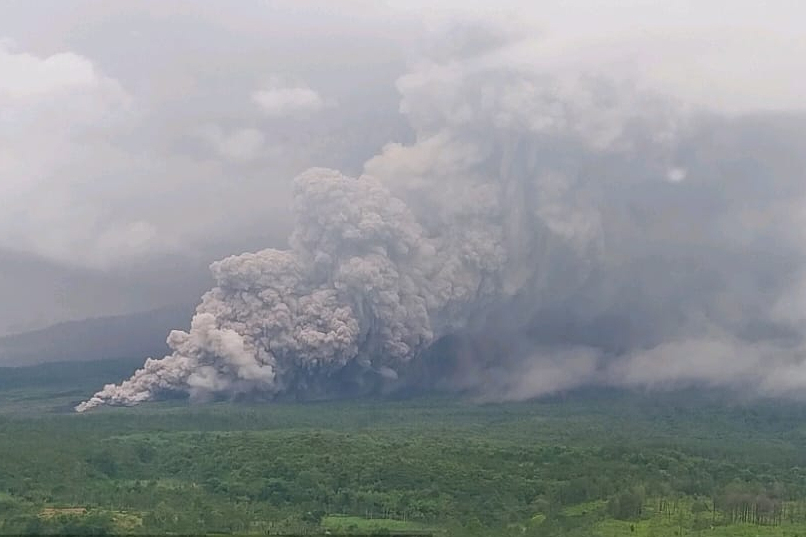There is no shortage of crisis, turmoil and tension in current international politics– North Korea-China relations have begun to develop, the U.S. and its allies have launched strikes on Syrian chemical weapons facilities and possible Russian involvement in Syrian attacks is being investigated.
Although many of these conflicts are cold, there is potential for them to heat up and many of the world powers in conflict today hold diverse and prolific missile arsenals.
What do the global missile systems look like?
China
China continues to develop a sophisticated and modern missile arsenal. Beijing is able to control the Asia-pacific region with a combination of ballistic and cruise missiles able to be launched from air, land and sea, according to the Center for Strategic and International Studies (CSIS).
Anti-ship ballistic missiles being developed by the republic pose an additional threat to aircraft carriers. China also holds a small arsenal of nuclear intercontinental ballistic missiles (ICBM) capable of hitting the U.S. mainland, according to CSIS and is a signer of the Treaty on the Non-Proliferation of Nuclear Weapons.

France
France is one of the five nuclear-weapon States recognized by the Treaty on the Non-Proliferation of Nuclear Weapons (NPT). According to the International Campaign to Abolish Nuclear Weapons (ICAN), France has only 300 nuclear warheads, most of which are deliverable by submarine.
France has an “array of sophisticated ballistic and cruise missile programs,” according to CSIS, and is committed to homeland defense. France’s former president, Francois Hollande, said, ”In a dangerous world, and it is dangerous, France does not want to let down its guard.”

India
India’s ballistic arsenal is an important deterrent for the nation as tensions with China and Pakistan rise. According to CSIS data, India’s missiles are predominately land-based, although it is working to expand its sea-launched missile capabilities.
According to ICAN, India developed its nuclear weapons in breach of non-proliferation agreements, but the nation is committed to its doctrine of “no first use.”

Iran
“Iran has also become a center for missile proliferation,” according to CSIS missile defense. Iran also steadily supplies Hezbollah and Syria’s Assad regime with missiles and rockets despite agreeing to the Joint Comprehensive Plan of Action (JCPOA) in 2015, which attempted to limit Iran’s nuclear capabilities. Additionally, Iran is likely supplying Houthi rebel groups with short-range missiles in the ongoing conflict in Yemen, according to CSIS.

Israel
Although Israel has a policy of ambiguity in relation to its nuclear arsenal, neither confirming of denying its existence, according to ICAN, the country has 80 nuclear warheads. The bulk of Israel’s missile supply is made up of a short-range missile, according to CSIS.
Israel also has a sophisticated missile defense system developed jointly with the United States.

North Korea
North Korea’s missile project has received a lot of attention as the country pushes to develop nuclear-tipped missiles. The majority of North Korea’s missiles are short-range and mid-range, according to CSIS, but the program has taken strides towards developing long-range and intercontinental ballistic missiles.
ICAN estimates North Korea has less than ten nuclear missiles and it is unclear whether they have launching capability.

Pakistan
Pakistan’s missile system is an important part of its defense against its main adversary, India, and has had significant technical assistance from China, according to CSIS. Pakistan has nuclear capabilities and according to ICAP, has around 110 warheads. The combined strategic force of its missile arsenal allows Pakistan to target almost any point in India.

Russia
Russia is one of the five nuclear-weapon States recognized by the NPT, and holds the most diverse inventory of missiles in the world. According to ICAP, Russia has made a major investment to modernize its warheads and delivery systems and has about 7,000 warheads.
Recently, Russia has been accused of assisting Syria with missile supply.

South Korea
South Korea’s military strategies “rely heavily on precision-guided munitions and surveillance to detect, preempt, and/or retaliate against a North Korean attack,” according to CSIS. South Korea seeks to protect its military assets and civilian population and accomplishes this through their precision strike arsenal.
The nation possesses the capabilities for nuclear warhead production but has committed to maintaining a nuclear-free Korean peninsula, according to Nuclear Threat Initiative.

Taiwan
Taiwan has developed a contentious relationship with China in its long struggle for independence. According to CSIS Missile Defense Project, Taiwan’s missile program serves as protection against China, its main security concern, and as a result, has limited its arsenal to mostly defensive assets. In recent years, Taiwan has secretly pursued development of strike missiles, according to CSIS.

The United Kingdom
The United Kingdom is recognized as a nuclear-weapon state by the TNP, and boasts a robust arsenal of air and sea-launched missiles. According to ICAN, the country has over 200 nuclear warheads and maintains a fleet of four armed nuclear submarines in Scotland. The UK continues to develop more advanced precision-guided missiles, according to CSIS.

The United States
While the United States claims to be the world’s most dominant military power, its missile arsenal is quickly aging. According to CSIS, multiple modernization projects are underway. The US is a recognized nuclear power under the NPT and the only country to have ever used a nuclear missile in war. The US nuclear arsenal is comprised of 6,800 warheads, according to ICAN.




